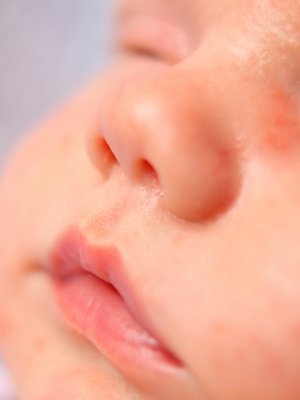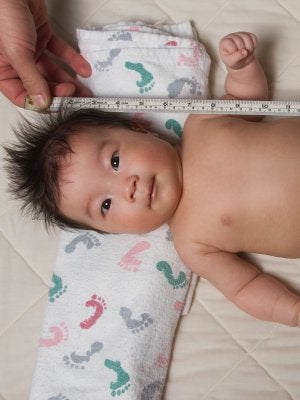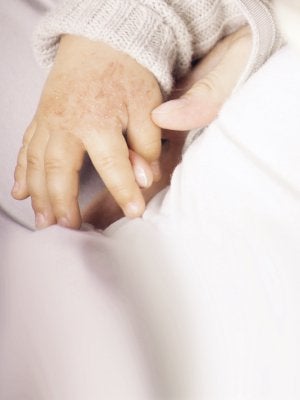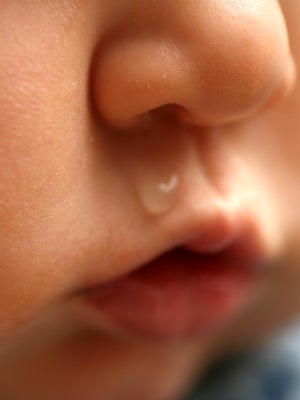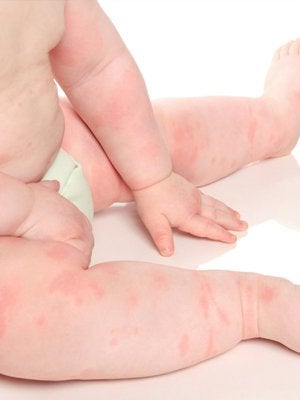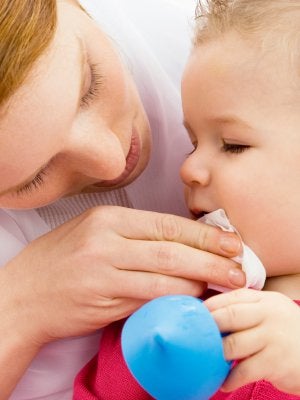ECZEMA

We believe breast milk is the best food for infants. When in consultation with their healthcare professional, mothers and families find that optimal breastfeeding is not possible due to their infant’s medical condition, formulas for special medical purposes play a vital role in providing essential nutrients to infants. We have a global commitment to market breast-milk substitutes responsibly.
Atopic dermatitis (AD), also referred to as eczema, is a highly pruritic, chronic, relapsing and inflammatory skin disorder.1 It is the most common inflammatory skin disease in children and affects up to 20% of children worldwide.2 AD is most prevalent in early childhood, usually appearing during infancy within the first six months of life.3
The symptoms of AD in infants include patches of skin that are red or brownish, dry, cracked, scaly or itchy skin, especially at night.4 AD can appear almost anywhere on the body, however in infants, AD usually appears as tiny bumps on the cheeks and primarily involves the face, the scalp, and the extensor surfaces of the limbs.5 It is typically an episodic disease of exacerbation, consisting of flares, which may occur two or three times per month, and remissions, but AD can be continuous in some children.6
What causes Atopic Dermititis in infants?
Around 50–70% of children with an early onset of AD are sensitised to one or more allergens.4 These are mainly food allergens, e.g. cow’s milk protein7, which is responsible for AD in 20–80% cases.4

Angioedema as a symptom of Cow’s Milk Protein Allergy
Acute Angioedema in infants is one of the many cutaneous symptoms of Cow’s Milk Protein Allergy (CMPA), primarily affecting the lips or eyelids.5 Angioedema occurs in about 10% of infants with CMPA.2
Atopic Dermatitis as a symptom of Cow’s Milk Protein Allergy
Atopic dermatitis in infants is one of the most common cutaneous symptoms of Cow’s Milk Protein Allergy (CMPA).8 Approximately one third of children with AD have a diagnosis of CMPA and approximately 40–50% of infants younger than 12 months of age with CMPA have a diagnosis of AD.9 Clinical evidence demonstrates that cow’s milk protein-induced symptoms of AD occur in 10–40% of all positive responses in controlled oral food challenges in infants with AD.9,10
The majority of infants affected with CMPA have at least two symptoms affecting at least two different organ systems.11,12 If, in addition to AD, your patient shows any of the signs and symptoms that can be related to CMPA13 (see below), you can use the CoMiSS® tool14 to score the combination of their symptoms and assess the likelihood of CMPA.
Signs and symptoms related to CMPA13
|
How to score this symptom with the CoMiSS® tool
· An easy-to-apply score based on an estimation of the surface covered by the dermatitis, using the surface estimation drawings from burns
· The larger the area covered by the dermatitis, the higher the score
· In addition to the skin score, if any of the following signs or symptoms related to CMPA are present, they should also be given a score using the CoMiSS® tool. These include crying, diarrhea, constipation, regurgitation, skin (urticaria) and respiratory symptoms.
CoMiSS® awareness tool
The Cow’s Milk-related Symptom Score (CoMiSS)® is a simple, fast and easy-to-use awareness tool designed to help you more easily recognise the signs and symptoms that can be cow’s milk-related in infants and young children.

If you suspect your patient is suffering from symptoms that may be suggestive of CMPA, use the CoMiSS® tool to score and assess the likelihood of CMPA.
OTHER SYMPTOMS OF COW'S MILK PROTEIN ALLERGY
|
References |
|
1. Schaefer P. An Fam Physician 2011 May 1;83 (9): 1078-84 2. Deadcock SJ. Clin Exp Immunol. 2008;153(2):151-61 3. Kulthanan K., et al. J Dermatol. 2007;34(5): 294–301 4. Lifschitz C and Szajewska H. Eur J Pediatr. 2015;174:141–50 5. Hill DJ., et al. Clin Allergy 1988;18(5)481-90 6. Vandenplas Y., et al Arch Dis Child 2007;92:902-08 7. Høst A. Pediatr Allergy Immunol. 1994;5:1–36 8. Koletzko S., et al. J Pediatr Gastroenterol Nutr. 2012;55(2):221–9 9. Vandenplas Y., et al. Acta Paed. 2015;104:334–39 |

